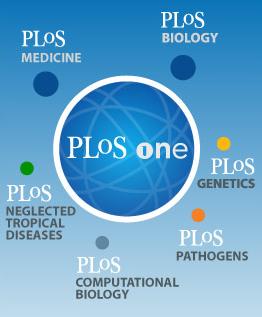
2011年7月,《科学》(Science)杂志发表声明称应作者要求,撤销了来自美国波士顿大学公共健康学院、意大利生物技术学院等处研究人员联合发表的关于百岁老人遗传学特征研究成果的论文。近日,这一研究团队就该问题进行了重申,他们重新在更严格的质控条件下进行了独立实验,最新的研究论文以与Science杂志原论文相同的题目“Genetic Signatures of Exceptional Longevity in Humans”发表在1月18日的《公共科学图书馆—综合》(PloS ONE)期刊上。
健康长寿是每一个人的梦想,但至今科学家们还并不清楚长寿的奥秘。2010年该研究团队称他们通过检测超过1000名的百岁或百岁以上的老人以及相同数目的作为对照的人的基因组,发现了一系列与一般人群相比特别常见的遗传学特征,并将研究数据发表在了当年7月的Sceince杂志上。
原文章中,研究人员对超过1000名的百岁或百岁以上的老人以及相同数目的作为对照的人的基因组进行了检测。他们找到了在百岁或以上的老人与随机选择的个人之间有着最大差异的多个基因标志。因为人要活到非常老的年龄一定会有多个基因的参与,之后研究人员根据150个基因标志研发出了一个可计算一个人达到异常高寿概率的模型。应用这一模型,研究人员可以预测某人是否可以活到百岁或以上,而且精确性达77%。研究人员还在90%的研究对象身上发现总共19个不同的“格外长寿”基因标签。他们发现,研究对象中最长寿人群,即年龄不低于110岁的老人中,45%老人所含基因标签显示他们“拥有最高比例的长寿相关基因变异体”。
但是该论文一经发表,就被质疑存在缺陷而引起了多方的关注和争议,同年11月12日《科学》主编Bruce Alberts发表声明表示对此事高度关注。2011年7月,在该论文发表1周年之际,Science宣布应作者要求,以实验所用芯片出现一些“技术性错误”,以及不充分的质量控制方法从而导致结果出现错误为由,正式撤销这篇论文。
在《PLoS综合》新文章中,研究人员重新在更严格的质控条件下进行了独立实验,去除了模糊不明的SNPs结果,在独立平台上再分析基因型数据,利用原文章中的方法再次分析了删减后的数据。研究人员收集了801名百岁或百岁以上的老人(平均年龄为104岁)和914名健康对照人群的基因数据进行了对比分析,发现了281个与人类寿命有关的基因标记。
这些基因大部分被证实与老年人的常见疾病有关联,譬如老年性痴呆症、心血管疾病、糖尿病等。研究发现,这些长寿老人往往到90岁以后才出现老年病症状,似乎他们的一些基因能推迟或避免老年疾病的发生。
研究学者表示,虽然环境在很大程度上影响着人类的寿命,但基因却决定了90岁以后的身体状况。不过他们同时忠告人们,即使基因对寿命有一定的影响,还是建议人们遵循健康的生活方式。

Genetic Signatures of Exceptional Longevity in Humans
Paola Sebastiani, Nadia Solovieff, Andrew T. DeWan, Kyle M. Walsh, Annibale Puca, Stephen W. Hartley, Efthymia Melista, Stacy Andersen, Daniel A. Dworkis, Jemma B. Wilk, Richard H. Myers, Martin H. Steinberg, Monty Montano, Clinton T. Baldwin, Josephine Hoh, Thomas T. Perls
Like most complex phenotypes, exceptional longevity is thought to reflect a combined influence of environmental (e.g., lifestyle choices, where we live) and genetic factors. To explore the genetic contribution, we undertook a genome-wide association study of exceptional longevity in 801 centenarians (median age at death 104 years) and 914 genetically matched healthy controls. Using these data, we built a genetic model that includes 281 single nucleotide polymorphisms (SNPs) and discriminated between cases and controls of the discovery set with 89% sensitivity and specificity, and with 58% specificity and 60% sensitivity in an independent cohort of 341 controls and 253 genetically matched nonagenarians and centenarians (median age 100 years). Consistent with the hypothesis that the genetic contribution is largest with the oldest ages, the sensitivity of the model increased in the independent cohort with older and older ages (71% to classify subjects with an age at death>102 and 85% to classify subjects with an age at death>105). For further validation, we applied the model to an additional, unmatched 60 centenarians (median age 107 years) resulting in 78% sensitivity, and 2863 unmatched controls with 61% specificity. The 281 SNPs include the SNP rs2075650 in TOMM40/APOE that reached irrefutable genome wide significance (posterior probability of association = 1) and replicated in the independent cohort. Removal of this SNP from the model reduced the accuracy by only 1%. Further in-silico analysis suggests that 90% of centenarians can be grouped into clusters characterized by different “genetic signatures” of varying predictive values for exceptional longevity. The correlation between 3 signatures and 3 different life spans was replicated in the combined replication sets. The different signatures may help dissect this complex phenotype into sub-phenotypes of exceptional longevity.
文献链接:https://www.plosone.org/article/info%3Adoi%2F10.1371%2Fjournal.pone.0029848








